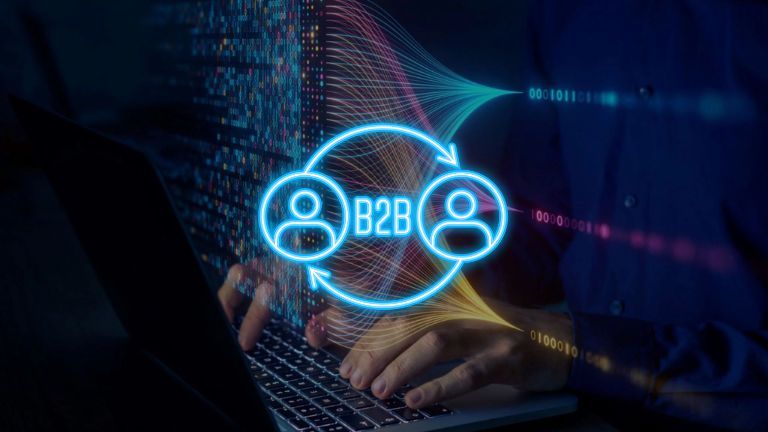The Business-to-Business Software as a Service (B2B SaaS) industry is changing fast and is expected to grow significantly. By 2030, it’s projected to reach about $1.08 trillion, thanks to strong yearly growth. Here are some key trends shaping the future of B2B SaaS that businesses should know about:
Table of Contents
Top Key Trends Shaping the Future of B2B SaaS
1. AI and Machine Learning Are Everywhere
Artificial Intelligence (AI) and Machine Learning (ML) will transform how companies use SaaS tools by automating routine tasks and making software smarter and more user-friendly. Almost every new SaaS product will have AI capabilities, helping businesses make better decisions and improve customer experiences by analyzing data faster and more accurately.
2. More Personalization for Every User
As competition heats up, software companies will work harder to offer personalized and even hyper-personalized experiences for customers. By using customer data and analytics, businesses can create products that fit individual needs. This trend boosts satisfaction, loyalty, and ultimately, success for both providers and users.
3. Micro SaaS Is on the Rise
Micro SaaS refers to small, focused software solutions built to solve specific problems. They offer companies a targeted way to tackle challenges without the cost and complexity of larger systems. As businesses aim to work faster and smarter, micro SaaS solutions will gain popularity because they’re quick to adopt, cost-effective, and highly specialized.
4. Evolving Subscription Models
The days of one-size-fits-all subscription plans are fading. Companies increasingly want flexible options, like paying based on their actual usage. These usage-based models align costs with what customers actually consume, giving businesses better budget control and greater return on investment (ROI). Tiered subscription levels will also address different business sizes and needs.
5. Better Data Integration Across Tools
With business operations growing more complex, companies need SaaS products that integrate seamlessly across platforms. By 2025, having smooth data connections between software will be crucial. This will lead to a more complete view of customer interactions and help companies make smarter, faster decisions.
6. Prioritizing Cybersecurity
As businesses become more dependent on SaaS solutions, keeping data safe will be a top priority. Companies must guard against evolving cyber threats by implementing strong security measures and following data privacy regulations like GDPR and CCPA. Ongoing investment in security is essential to protect sensitive information.
7. Product-Led Growth (PLG) Strategies
A PLG strategy relies on the product itself to drive customer acquisition and loyalty. By making products intuitive, useful, and valuable, companies can bring in more customers organically—without leaning as heavily on traditional sales tactics. Great user experiences lead to satisfied customers who spread the word, driving growth.
8. Tailored Solutions with Vertical SaaS
Vertical SaaS products are built to address the needs of specific industries, such as healthcare or finance. This tailored approach lets businesses adopt software that directly aligns with their unique challenges and requirements, leading to more effective solutions and higher productivity.
9. Low-Code and No-Code Development Tools
These platforms let non-technical people build their own apps with minimal or no coding. It empowers employees across organizations to innovate and respond quickly to business needs, reducing dependence on IT teams and speeding up development.
10. Tracking Customer Success Metrics
To stand out in a crowded market, SaaS providers will focus heavily on measuring customer success. This means tracking how engaged, satisfied, and loyal customers are. By closely monitoring these metrics, companies can fine-tune their offerings to deliver maximum value and continually improve.
Also read: SaaS Integrations: Enhancing Efficiency and Collaboration Across Platforms
Key Takeaway
The B2B SaaS landscape is changing fast as we move towards 2025. Companies that adapt to these trends—like AI integration, personalized experiences, flexible pricing, robust security, and focus on customer success—will have a leg up. Staying on top of these shifts is key to leveraging technology, staying competitive, and growing sustainably in this digital-first world.
FAQs
1. What is driving the increased adoption of AI and Machine Learning in B2B SaaS?
AI and ML offer significant benefits, such as automating routine tasks, enhancing user experience, and delivering data-driven insights. These technologies make SaaS products smarter, more efficient, and better suited for customer needs, giving businesses a competitive edge.
2. Why is personalization important in B2B SaaS products?
Personalization helps businesses offer tailored experiences that closely match individual customer needs. This leads to higher user satisfaction, better customer engagement, and greater loyalty, ultimately driving growth and retention in a competitive market.
3. What are Micro SaaS solutions, and why are they popular?
Micro SaaS refers to small, focused applications designed to solve specific business problems. They are gaining popularity due to their cost-effectiveness, quick deployment, and ability to address unique challenges without the complexity or expense of larger software platforms.
4. How are subscription models changing in the B2B SaaS industry?
Traditional subscription models are evolving to include flexible pricing options, such as usage-based pricing. This allows businesses to pay for what they actually use, making software investments more scalable and budget-friendly.
5. What role does cybersecurity play in B2B SaaS applications?
As SaaS solutions become integral to business operations, protecting sensitive data is more important than ever. Companies must prioritize cybersecurity to guard against evolving threats, comply with data privacy regulations, and ensure customer trust and system reliability.
